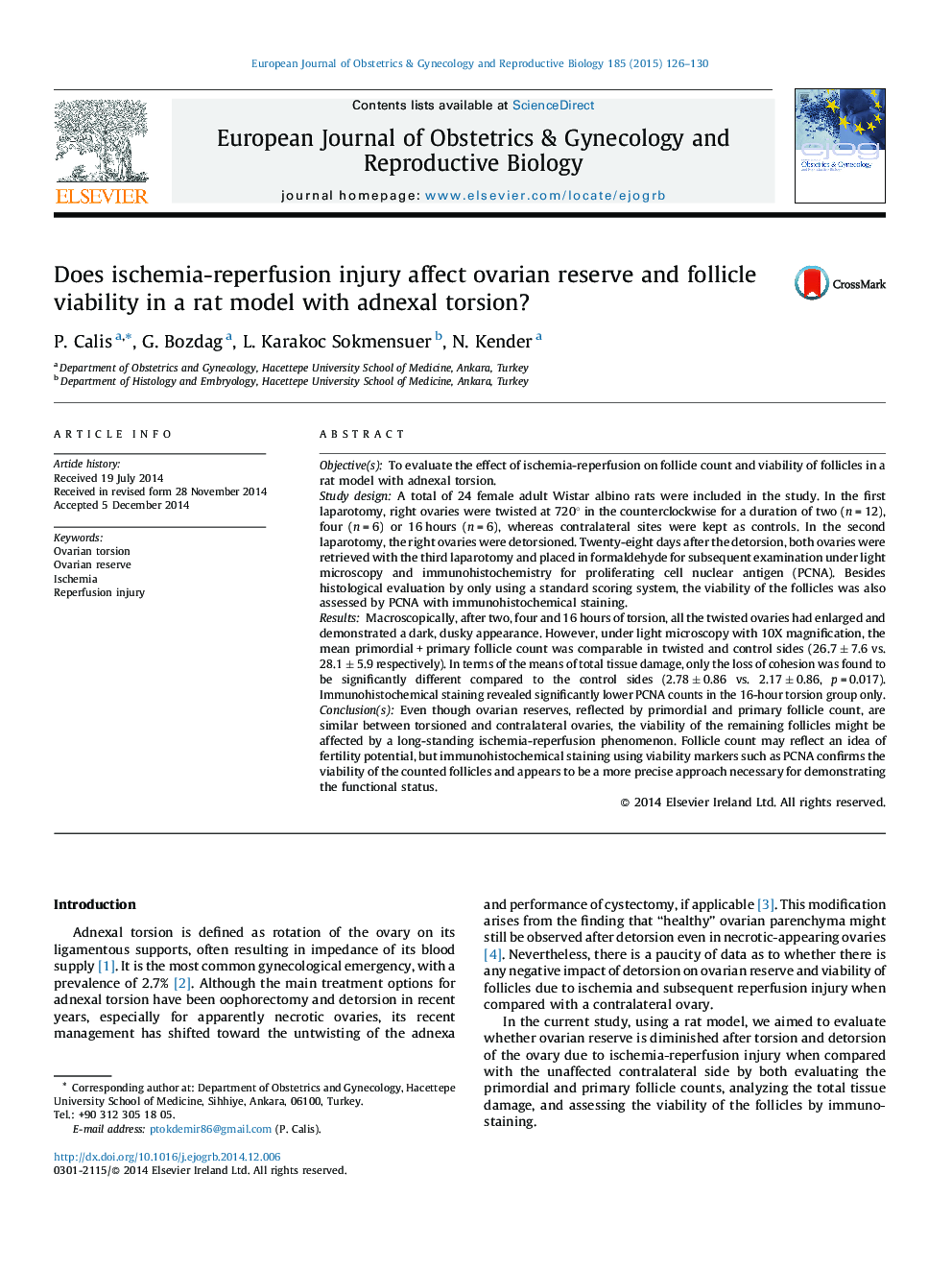| Article ID | Journal | Published Year | Pages | File Type |
|---|---|---|---|---|
| 3919677 | European Journal of Obstetrics & Gynecology and Reproductive Biology | 2015 | 5 Pages |
Objective(s)To evaluate the effect of ischemia-reperfusion on follicle count and viability of follicles in a rat model with adnexal torsion.Study designA total of 24 female adult Wistar albino rats were included in the study. In the first laparotomy, right ovaries were twisted at 720° in the counterclockwise for a duration of two (n = 12), four (n = 6) or 16 hours (n = 6), whereas contralateral sites were kept as controls. In the second laparotomy, the right ovaries were detorsioned. Twenty-eight days after the detorsion, both ovaries were retrieved with the third laparotomy and placed in formaldehyde for subsequent examination under light microscopy and immunohistochemistry for proliferating cell nuclear antigen (PCNA). Besides histological evaluation by only using a standard scoring system, the viability of the follicles was also assessed by PCNA with immunohistochemical staining.ResultsMacroscopically, after two, four and 16 hours of torsion, all the twisted ovaries had enlarged and demonstrated a dark, dusky appearance. However, under light microscopy with 10X magnification, the mean primordial + primary follicle count was comparable in twisted and control sides (26.7 ± 7.6 vs. 28.1 ± 5.9 respectively). In terms of the means of total tissue damage, only the loss of cohesion was found to be significantly different compared to the control sides (2.78 ± 0.86 vs. 2.17 ± 0.86, p = 0.017). Immunohistochemical staining revealed significantly lower PCNA counts in the 16-hour torsion group only.Conclusion(s)Even though ovarian reserves, reflected by primordial and primary follicle count, are similar between torsioned and contralateral ovaries, the viability of the remaining follicles might be affected by a long-standing ischemia-reperfusion phenomenon. Follicle count may reflect an idea of fertility potential, but immunohistochemical staining using viability markers such as PCNA confirms the viability of the counted follicles and appears to be a more precise approach necessary for demonstrating the functional status.
